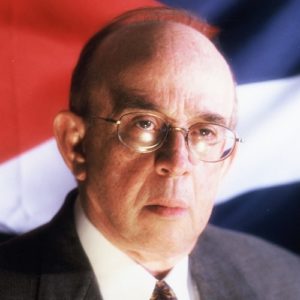Cuba’s first organized Students’ Federation, created in late 1922 with Julio Mella as secretary and popular figurehead, in angry response to the corruption and incompetence of many professors at the University of Havana. Although its first important manifesto on January 10, 1923, concerned only university issues, it was regarded as a challenge to the Zayas government and from then on, the students assumed a significant political role they would not abandon until the 1960s. It was outlawed by President Machado in 1925. Throughout World War II the FEU remained relatively quiet and supported the war efforts. In July 1942, however, the FEU (reorganized following the reopening of the university in 1937) demanded that Batista form an honest, efficient war cabinet prior to the introduction of registration for military conscription. The students also turned against the Communists and Russia’s war posture, while denouncing the corruption and disorganization of the Batista administration. During the late 1940s the FEU degenerated into a steppingstone for political prominence, with the advent of gangsterismo: violent student action groups that preyed upon university faculty and administrators. The turmoil surrounding the organization climaxed in the 1948 assassination of Manolo Castro.
In the 1950s the FEU was the sole organization representing the University of Havana’s 17,000 students. Following Batista’s cuartelazo of 1952, it demanded restoration of the Constitution of 1940, return to civil government, and free elections. By 1955 it had become a vocal opponent of the Batista regime, calling for strikes in November to protest Batista’s refusal to call for elections. FEU President Fructuoso Rodríguez concluded that efforts by third parties to mediate the struggle between the government and the student opposition were futile. In December 1955 they formed the clandestine Directorio Revolucionario. Later the Partido Socialista Popular sought an alliance with the FEU, which it hoped to dominate, but such an alliance was never achieved. After the Humboldt events of 1957 the FEU became virtually inactive until the Revolution of 1959, when students of the newly, reopened University of Havana took provisional charge of the FEU and purged all pro-Batista faculty under the authority of newly formed University Reform Commission. Fidel Castro realized that, to mobilize and indoctrinate the students, control of the FEU was essential. He therefore advocated unity among the various student factions and successfully obtained the FEU leadership’s support by installing his brother Raúl’s favorite Rolando Cubela. The FEU stayed loyal to the regime until well into the 2000s.









1 comentario en “FEDERACION ESTUDIANTIL UNIVERSITARIA (F.E.U.)”
Do this text and history means that the FEU is an independent from the still current current communist dictatorship in Cuba ?
I would like to know !
Los comentarios están cerrados.